Peter Smith's Blog, page 3
July 12, 2025
Poetic serendipity
I have written before about the pleasure of serendipitous finds in charity second-hand bookshops. It isn’t the matter of saving a few pounds (or of giving the money to a charity rather than a chain bookstore); that’s nice, to be sure, but it doesn’t at all account for the pleasure, the happy feeling engendered by the smidgin of good fortune. And it’s the sort of little thing that sticks in the mind — “Do you remember finding this by chance when we were on holiday in …?” That can become part of your history with a loved book in a way that just marching into Blackwells and picking a copy off the pile never does.
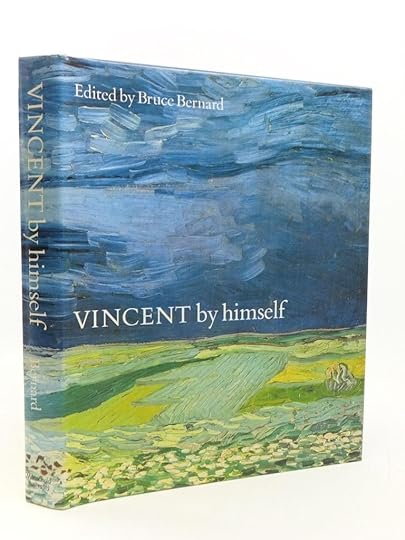
When just back from Amsterdam and visits to the Van Gogh Museum, there in our favourite Oxfam bookshop (in Saffron Walden, surely one of the best run in the land) was a ridiculously cheap copy of the beautifully produced, very large format, Vincent: by himself. This intersperses many (quite excellent) reproductions of paintings and drawings, familiar and unfamiliar, with excerpts from Vincent’s letters to Theo.
We have an ancient paperback of the letters, which I’ve not looked at for decades, so it has been good to be prompted to re-read some. Here’s Vincent after his first visit to the Rijksmuseum, then newly opened in 1885:
‘The Syndics’ is perfect, is the most beautiful Rembrandt; but ‘The Jewish Bride’— not ranked so high, what an intimate, what an infinitely sympathetic picture it is, painted d’une main de feu. You see, in ‘The Syndics’ Rembrandt is true to nature, though even there, and always, he soars aloft, to the very highest height, the infinite. But Rembrandt could do more than that – if he did not have to be literally true, as in a portrait, when he was free to idealize, to be poet, that means Creator. That’s what he is in ‘The Jewish Bride’.
Yes, yes, how wonderful ‘The Jewish Bride’ is!
When we got Vincent home, we realized that — though there were no signs of damp damage — the book smelt unpleasantly musty when opened. Drat. Yet even this has had a rather good outcome. We have been leaving the book open on a table in the living room by an open window, turning to a new spread every couple of days, and the smell has quickly almost entirely gone — and this way we have got to spend much more time again than we might otherwise have done with some of Van Gogh’s pictures, as we paused at the table, passing by at random moments. Maybe we should do this with some other art books …
The final paintings reproduced in Vincent show Van Gogh at his most free to idealize, to be poet, concluding with the extraordinary Wheatfield with Crows, painted indeed d’une main de feu. It is easy, too easy, to see intimations of his imminent suicide — the path seeming coming to an untimely stop, the minatory crows. And yes, van Gogh wrote to Theo and his wife, “I have painted three more large canvases. They are vast stretches of wheat under troubled skies, and I didn’t have to put myself out very much in order to try and express sadness and extreme loneliness.” Yet he continues “I hope you’ll be seeing them shortly … I’m fairly sure these canvases will tell you what I cannot say in words, that is, how healthy and invigorating I find the countryside.”
There is a field with crows too in Deryn Rees-Jones’s wrenching sequence of poems in memoriam for her husband.
At the foot of the Sugarloaf
blackthorn spikes and brides
the hedgerows, crows gather
in the upward fields. Now grief
is written in their dark alignments,
sorrow in a nearby field of horses.
“Now grief is written in their dark alignments” — just so apt for Van Gogh’s crows too.
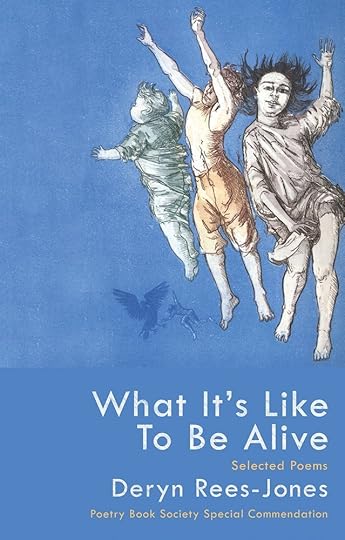
Those lines are from Rees-Jones’s admired collection Erato which I have been reading and re-reading recently. “Named after the Greek muse of lyric poetry, Erato combines documentary-style prose narratives with the passionate lyric poetry for which Rees-Jones is renowned. … Erato’s themes are manifold but particularly focus on personal loss, desire and recovery, in the context of a world in which wars and displacement of people has become a terrifying norm.”
Deryn Rees-Jones is a poet new to me (but another in that long succession of outstanding Anglo-Welsh poets from Edward Thomas through to the wonderful Gillian Clarke and onwards). And I can’t find the right word for that very particular experience of finding a new poetic voice that seems to speak directly to me, engaging the heart. An experience to be much valued.
And look, here just now is another chance bookshop find! — a second-hand copy of Deryn Rees-Jones’s earlier volume of selected poems, What It’s Like to Be Alive. I’ll relish slowly reading this.
Once upon a very long time ago, in a Cambridge summer garden in quite another life, I read perhaps half of Proust’s A la recherche du temps perdu. And then for years, the paperbacks of Scott Moncrieff’s translation — all twelve of them (do you remember their look?) — followed me around gathering dust. At some point I must have replaced them with Kilmartin’s revised translation which I still have, out of reach on a high shelf, the last of the three volumes still looking suspiciously unread.
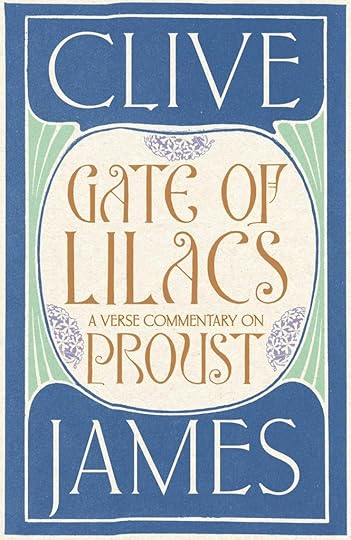
A couple of years ago, I noticed that there was a new English version of part of Swann’s Way as Swann in Love, translated by Brian Nelson. In a second other life, Brian was a colleague in Aberystwyth. So I picked up a copy and read it — rather stunned to find how much I remembered both of incident and of atmosphere. But … But these are not people I can get to care about, or want to know more of. And in the end, the anatomizing of Swann’s obsession, the dissection of the Verdurin circle, left me sometimes amused but more often irritated, and mostly even less engaged than before. Ah well.
But — more serendipity — I lately came across Clive James’s “verse commentary” on Proust, fifteen blank verse poems each just three or four pages long. And, though they are uneven, these I have read and read again with considerable pleasure. Do they give me enough of a glimpse of what I am missing to tempt me back to tackle Proust again? Perhaps not. But here at the end is Clive James, himself writing when not long for this world, speaking of the dying Marcel:
… He lay
As powerless as the child that he had been
When waiting an eternity for his mother
To climb the stairs and kiss him. Now my turn
Has come to quit the stage, I only hope
I’ve used my time between strength and departure,
The extra time, a tenth as well as he.
Ah, soldier: what you did. It’s in those shelves
Of books by and about you I will leave
Here in my kitchen which has no cork walls,
Only the English early summer light
That pours in from the garden where my wife
And I meet on my balcony to count
The birds and wonder how to make them stay.
We’ve overdone the food, I think. Next spring,
If I’m still here to help, we might dial down
The chow supply. It’s like Maxim’s out there.
It’s too much. Proust is sometimes that as well,
But not so often as he is austere,
Saying enough to make you see the rest,
As the face of Oriane is not described
But only conjured from your memories
Of everything that you have loved. And soon
All that I love will leave me, as I go
First into silence, then the fire, and then
The harbour water, in which there will be
At last no room to breathe, no time to think:
No time to think even of you, Marcel.
I hope Clive got his wish, and his ashes were indeed scattered under Sydney Harbour bridge …
The post Poetic serendipity appeared first on Logic Matters.
July 1, 2025
Srivastava on Naive Set Theory
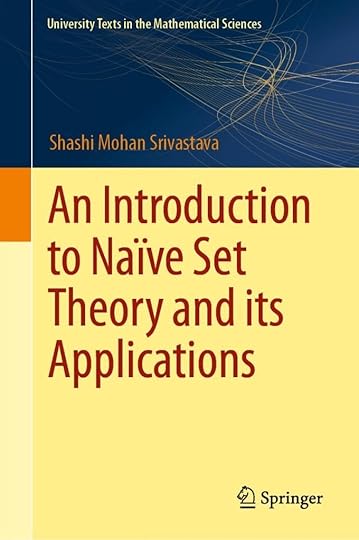
In a previous book note, and also in the Appendix to the Guide, there is a review of Shashi Mohan Srivastava’s earlier A Course on Mathematical Logic. Parts of that book, as I say, could make useful supplementary/revision reading. So I was interested to see that he now has another short introductory text, An Introduction to Naïve Set Theory and Its Applications (Springer, 2024).
What counts as “naive” set theory according to Srivastava? Quite a lot; basically, it’s set theory for applications, while not worrying too soon about a formal axiomatization of ZFC. Except that Srivastava is wedded to the idea that a set, properly speaking can only contain other sets as members. After giving a ZF-style extensionality axiom, he writes
Consider the collections of all boys of a class and that of all girls in the class. Are these two collections sets? Note that these two collections, say A and B, respectively, contain the same sets because none of them contain any set. But A and B are not the same collections. Hence, A and B do not satisfy the extensionality axiom and so are not sets.
This seems off-beam to me. Sets (including in mathematical applications!) are usually allowed to have non-sets as members, and the corresponding natural set theory allows urlements. An alert student reader should be puzzled!
Things do go quickly from this perhaps inauspicious(?) start. We are looking at ‘Some more applications of Zorn’s Lemma’ by p. 28. But standing back from the details, this means that, as I see it, the book falls between two stools. On the one hand, it isn’t a replacement for the sort of gentle introduction to elementary applicable set theory which we get in e.g. the opening chapter of Munkres’s topology text (or in the opening chapters of Tim Button’s contribution to the Open Logic project). On the other hand, it isn’t a replacement for a fully-developed entry-level text like Enderton’s classic (which more illuminatingly interweaves “naive” informal set theory with a formal axiomatization).
Readers who have learnt some set theory from elsewhere might be intrigued, though, by Chapter 5 which gives an approachable treatment of the Banach Tarski “paradox”. (So that might get a mention in the next iteration of the Guide!)
The post Srivastava on Naive Set Theory appeared first on Logic Matters.
June 29, 2025
Bjorndahl’s Introduction to Classical and Modal Logics
I have belatedly updated the PDF Appendix to the Study Guide and also the page of links to book notes — 76 of them! — to incorporate some blog posts from last year. And I am now starting to do more homework, as I slowly work up to revising the main Beginning Mathematical Logic Study Guide. I plan to take things roughly in the order of the chapters of the Guide; so I’ll begin by tackling a few more texts relevant to naive set theory (and other preliminaries) or which provide reading on, inter alia, core FOL.
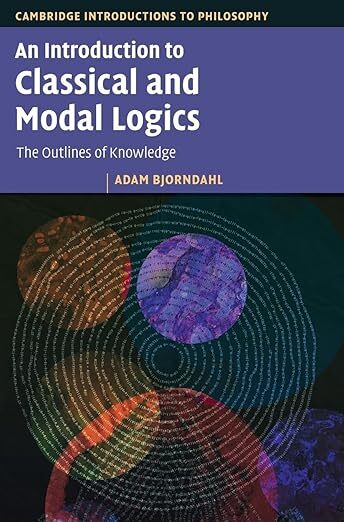
First up is Adam Bjorndahl’s contribution to the Cambridge Introductions to Philosophy series, An Introduction to Classical and Modal Logics. This strikes me as a rather odd book, both in terms of level and in terms of coverage. So before getting critical, let me say that I do like its approachable style and tone. And there is a page-layout device which works rather well, of having mini-comments and further explanations in the margins, keeping the main flow of text more economically focused. (Unfortunately, the version made available online through the Cambridge Core system completely fouls-up this aspect of the text.)
This is a short book. So after a brief Introduction, propositional logic and predicate logic are polished off in two chapters, just 80 pages (with relatively narrow columns of main text, set quite generously spaced). And yet we get as far as a completeness proof for predicate logic. So who is the intended reader? A philosophical newbie with no mathematical background will most surely struggle.
In fact, the book really seems aimed at students also doing maths (or maths as well as philosophy). The very first words of the Introduction are “Mathematics is the systematic structure of patterns and structure … What if we turn this focus inward, and engaged in the systematic study of mathematics itself? This is one way of understanding what logic is.” Later, to take just one example, we are told to take the domain of interpretation in a completeness proof for FOL with identity to be the quotient of the set of terms by the equivalence relation of provable equality. This is the first mention of the idea of a quotient. A marginal comment to the rescue? “For a refresher on equivalence relations and quotients, see Appendix A2”. Refresher? So the reader is already supposed to have encountered such ideas.
I could continue; but I suggest we just forget that this book is officially masquerading as an introduction for philosophers. Would the chapters on PL and FOL work for suitably mathematically primed students? As I said, the presentational style is congenial. But to my mind we get rather too little, rather too fast. On propositional logic, we get a speedy account of the two-valued connectives and truth-tables, an introduction to a Hilbert-style deductive calculus (!), followed by soundness and completeness proofs. Topics that should give the thoughtful student pause — e.g. the truth-functional conditional, explosion — can whizz by. On FOL, we meet the syntax, semantics and a Hilbert-style deductive calculus all within 24 pages, before proceeding to soundness and completeness proofs. Technically fine, as far as I can see: but no more accessible than the best alternatives. And by my lights, someone working at this level would do significantly better with a more expansive treatment as in Enderton’s classic book or other options suggested in the Guide; and there is now Westerståhl’s excellent text as well (where you’ll also learn e.g. about natural deduction).
The second part of Bjorndahl’s book starts with a chapter on propositional modal logic. This gets quite technical quite quickly and is all given what strikes me as a strangely epistemic twist. Indeed the traditional interpretation S5 in terms of logical necessity is — unless my attention flickered — never discussed. The official audience of philosophy students would want a gentler account that links up better to discussions of logical and metaphysical necessity.
In passing, I note that Bjorndahl suggests that “Alice believes  ” can be interpreted as saying something like “
” can be interpreted as saying something like “ is true in all configurations of the world that Alice considers possible”. Really? For a start, what does “considers possible” mean here if not “believes to be possible”. And “possible” in what sense? Consistent with what she believes?
is true in all configurations of the world that Alice considers possible”. Really? For a start, what does “considers possible” mean here if not “believes to be possible”. And “possible” in what sense? Consistent with what she believes?
The chapter on modal logic is followed by, of all things, a chapter on Group Knowledge (an interest of Bjorndahl’s but for me not on the menu of initial topics you need to meet when starting out on modal logic). Then, crunching the gears, there is a 14 page final chapter on topological semantics. If you are going there, you’d expect to hear about intuitionistic logic; yet that only gets a glancing mention back on p.3. Odd.
There are lots of good treatments out there of PL and FOL; there are lots of good treatments of modal logic too (also covering the sorts of quantified logics of current interest to philosophers). Despite its often reader-friendly tone, Bjorndahl’s book won’t be displacing existing recommendations in the Guide.
The post Bjorndahl’s Introduction to Classical and Modal Logics appeared first on Logic Matters.
June 26, 2025
ICT2, the paperback!
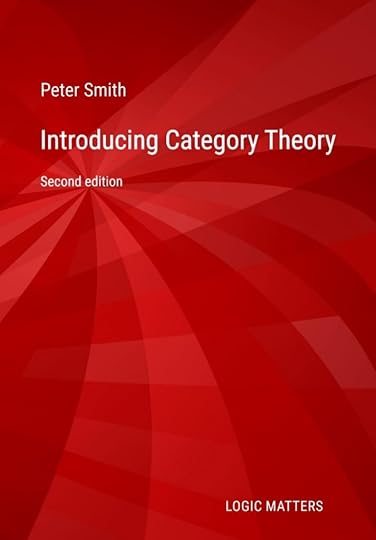
So here it is, available from today. As with the other Big Red Logic Books, to keep the cost minimal, it is an Amazon-only print-on-demand book, ISBN-10 : 1068346701. And, as with the other Big Red Logic Books, you can still download the latest PDF for free from the categories page.
My apologies again for the confusing history of earlier versions. As I said before, I kept changing my mind about such major issues as one book versus two, and the ordering of Parts II and III. And then the first edition of Introducing Category Theory was rather rushed out last summer, in case heart surgery didn’t have a good outcome. But I hope this second edition will now be reasonably stable.
As I say at the very end, quoting Louise Glück, “Reading what I have just written, I now believe I stopped precipitously, so that my story seems to have been slightly distorted, . . .”. But I certainly have no plans to add to the book, which has already become ridiculously long: it goes far enough to do the promised job of introducing some major themes and so make some excellent standard texts that bit more accessible. However, I’ll no doubt very occasionally update the text when I find typos or thinkos — or when I can’t resist tinkering with sentences to get them to read more smoothly. So do let me know about any errors in the current version, however small.
Meanwhile, enjoy, as they say! And if you do find ICT2 helpful, it would be a kindness to help spread the word by leaving a mini-review or even just a rating on Amazon.
The post ICT2, the paperback! appeared first on Logic Matters.
June 23, 2025
PHQ’s Schubert on Sunday
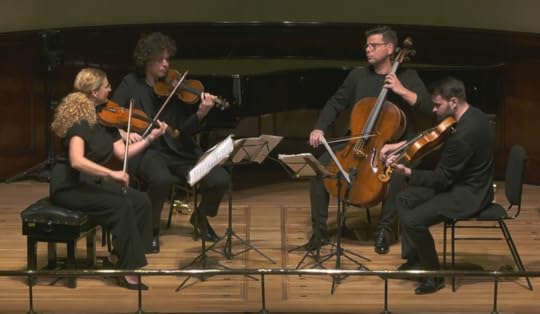
Back in 2012, the Pavel Haas Quartet recorded a prize-winning Schubert CD including a truly great performance of the Death and the Maiden Quartet. I wrote at the time:
The Pavel Haas launch into “Death and the Maiden” with fierce attack and astringent (almost vibrato-less) tone. And they start as they mean to go on. The [then] recent Takacs and the Belcea versions — good though they are — now seem slightly restrained in contrast (this is the still-young Schubert confronting death here, and the still-young Pavel Haas respond with apt intensity). The obvious comparison would be with the Lindsays’ great recording from twenty five years ago, which I would previously have said was the finest post-war version. But the Pavel Haas’s controlled passion, their even more moving account of the variations of the second movement, and their vehement drive to the end of the quartet, makes — I think — for an unparalleled performance.
The late Michael Tanner, writing in the BBC Music Magazine, thought this a “great performance … essential listening for anyone who loves Schubert”. The Times reviewer wrote “the perfect fusion of virtuosity and profundity.” The Gramophone reviewer heaped praise, also describing the ending as “raw, visceral, and with an emotional immediacy that is almost unbearable” (and the CD later won a Gramophone Award as the chamber music disc of the year. )
So we couldn’t pass up the chance to hear the PHQ playing Death and the Maiden live at Wigmore Hall yesterday. And, if anything, it was even more stunning a performance, the range of dynamics even wider, the start of the slow movement even more mesmerising, the drive of the last movement even a notch more intense. (And all credit to their new violist Šimon Truszka, a fine player and one whose richness of tone can match Peter Jarušek’s driven cello — has the Quartet ever sounded better?) Just wonderful. The audience was obviously bowled over.
Sadly, the concert — the PHQ also played Schubert’s Quartettsatz and Beethoven’s last quartet — was not recorded on video (or even just audio, as far as I know). We still have the great CD. But if you ever get the chance to hear them revisit Death and the Maiden live, you really mustn’t miss it!
The post PHQ’s Schubert on Sunday appeared first on Logic Matters.
June 20, 2025
A very short book note
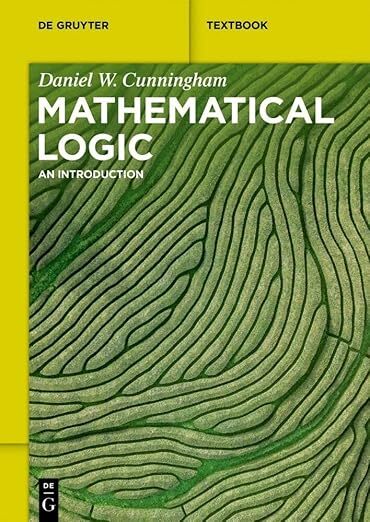
With a mind to building myself a reading list for homework before updating the BML Study Guide, I have been doing some online searches for recent publications on mathematical logic. I asked ChatGPT and Claude in “research” mode too, but they were pretty useless. However, a title they both noted, new to me, was Mathematical Logic: An Introduction by Daniel Cunningham, published by De Gruyter in 2023 as a quite exorbitantly priced paperback. I’ve taken a look at a copy lurking online.
There are chapters on propositional logic and FOL, with soundness and completeness proofs, and then chapters on computability and on undecidability and incompleteness. So this complements Cunningham’s 2016 book on set theory for CUP.
I do mention that earlier book in the Guide, p. 89. And I’m afraid I summarily dismiss it, with the remark that “Its old-school Definition/Lemma/Theorem/Proof style just doesn’t make for an inviting introduction for self-study.” So I didn’t get my hopes up for this new effort. And I can only report that this really does seem more of the same. I just can’t warm to the rather relentless style, unleavened by enough by way of engaging explanatory classroom chat.
I dipped in and out and repeatedly found what are beautiful and elegant ideas rather submerged under the formalities. And I could argue about some of the expository choices too. For example, having built up all the needed apparatus, the treatment of Gödel’s theorems at the end of the book is perhaps oddly rushed (we get an incompleteness theorem resting on a semantic premiss, but not the syntactic version which usually gets the honorific title of the first incompleteness theorem).
Maybe these books could work as rather austere monochrome notes accompanying a suitably colourful and motivating lecture course (or work as revision materials). But for initial self-study of their topics? Not so much. But judge Cunningham’s style for yourself, in a minor case. There’s a preview of the front matter and the first ten pages here. Ask yourself if it is going to be obvious to the student neophyte what is going on at pp. 8–10(!) about the “free generation” of sets. How easy to follow is that presentation from a standing start? I rest my case.
The post A very short book note appeared first on Logic Matters.
June 19, 2025
And the other Big Red Logic Books?

I had luxuriant locks, and the temple was still standing, when I originally started the notes on category theory. But here we are … (according to ChatGPT, channelling its inner Rembrandt).
The history of earlier versions is embarrassingly untidy (as I kept changing my mind about such major issues as one book versus two). And then the first edition of Introducing Category Theory was rather rushed out last summer, as I (of course) just didn’t know what the upshot of major open-heart surgery was going to be. It took a while to recover energy for the project, and then I found I wanted to make many more changes than I had expected. So how does the second edition differ? The chapters are ordered rather differently, though some readers are bound to think it still takes far too long to get to (what is now) Part II where the real categorial action starts. Then there are some 45 additional pages, with the new material scattered from beginning to end. I was relieved to find not too many outright errors in the first edition (forgive me for not keeping a tally of those). Hopefully, the new edition too — while unexciting — is mostly full of truths!
I should get a proof copy from Amazon at the beginning of next week. All being well, a paperback will then be out in the world in another week. Not that I think of the current version of the text as set in stone. As I say in the Preface, “you should think of what you are reading as still a ‘beta version’, functional though surely not bug-free”. But I must, for the moment, draw a line under the constant tinkering.
Where next? I have thoughts about one possible short, very short, new book (logical exposition, not philosophy) — but I need to brood on that for a while. But what shall I do in the meantime about the other four Big Red Logic Books?
I can’t imagine revisiting the Gödel books. The world isn’t as interested as I thought it might be in the slim Gödel Without (Too Many) Tears. While people do seem to rather like the full-fat version, An Introduction to Gödel’s Theorems, just as it is. Indeed, there’s not much I’d want to rewrite. And it is already a long book, so actually adding to it could be unwelcome. So I’m minded to leave well alone.
By contrast, there is a lot I’d like to rewrite in An Introduction to Formal Logic. But I suspect that could be wasted effort. OK, the book does steadily sell about a thousand copies a year, and the PDF is downloaded from one to two thousand times a month. But that’s small potatoes compared with the numbers of anglophone students doing intro logic courses out there. Perhaps it would be better to leave IFL as it is, and put any effort in that direction into an overlapping book of a rather different character, one that isn’t aiming to be a sole course text so much as a useful companion to whatever your official intro text happens to be. Something else to brood about, perhaps.
Which leaves the Study Guide, Beginning Mathematical Logic. That is downloaded even more than IFL (and, unlike the intro book, it is unique and without competitors). Improving and updating the Guide for a new edition would in fact be quite an engaging project (OK, I know, I don’t get out much …). It will be both interesting to do some of the homework looking at recently published candidates for inclusion, and also fun to sound off again about pet prejudices …
So that seems to be a decision. Whatever else I get to do, Deo volente, it’s to be a new edition of BML first.
The post And the other Big Red Logic Books? appeared first on Logic Matters.
June 18, 2025
The game that LLMs are playing
For a persuasive way of thinking about what LLMs are up to, read this particularly lucid and sane piece by the philosopher Keith Frankish.
The post The game that LLMs are playing appeared first on Logic Matters.
June 14, 2025
Introducing Category Theory again
With a bit of useful proof-reading help from ChatGPT, and rather less from Claude, there’s a new version (2.8b) of ICT downloadable from the categories page.
Between them, my friendly AI assistants found perhaps half a dozen straight-up typos per chapter (misspelt words, omitted words, singular verbs with plural subjects and the like), and also caught the occasional symbolic foul-up, or carelessness with a technical term. So ChatGPT and Claude did earn their keep.
I asked only for reports of definite mistakes. Even so, most of the feedback I got was stylistic, complaining about informal locutions, the use of contractions like doesn’t and can’t, or the use of what they judged to be a less-than-academic tone. I mostly ignored such complaints.
As the chapter-by-chapter feedback went on, I got less impressed. Evidently, neither assistant was particularly reliable at even the most basic typo-spotting (as often enough a plain error found by one was entirely missed by the other). The style and organization of feedback would vary significantly from day to day (at least until I learnt to tell them to exactly copy the format of the previous session). ChatGPT could say that it had read all of a portion of a chapter when evidently it had stopped when it got to the tenth mistake (and then lied about doing that). It could also skip right over a large chunk of a chapter.
We all know by now about the way LLMs hallucinate — and you’ve probably seen the interesting research by Apple about the shortcomings of LLMs augmented, supposedly, with reasoning abilities. But the sheer flakiness of both ChatGPT and Claude when it comes to such a low-level task as proof-reading for plain errors remains quite surprising. Even here, they don’t (as the phrase has it) “just work”. Which perhaps makes it a bit easier to understand why Apple are having such trouble getting an AI-assisted Siri to function at the standards they’d be looking for.
The post Introducing Category Theory again appeared first on Logic Matters.
June 8, 2025
Clara, Noa, Elisabeth
As the world continues to go to hell in a handcart, let’s just pause for ten minutes to remind ourselves that there is beauty and tenderness … So from a couple of months ago, here are Noa Wildschut and Elisabeth Brauß playing the Three Romances for Violin and Piano by Clara Schumann. (Click the Watch on Youtube button.)
The post Clara, Noa, Elisabeth appeared first on Logic Matters.



